For families with mobility-impaired members, navigating multi-story homes can be a daily challenge. Stairs become barriers, limiting independence and safety. That’s where home wheelchair elevators for 2-6 floors step in—transforming multi-level living into a seamless, inclusive experience. Whether for aging parents, individuals with disabilities, or anyone needing reliable vertical mobility, these elevators blend safety, space efficiency, and cutting-edge technology.
In this guide, we’ll explore what makes a home wheelchair elevator for 2-6 floors unique, key specifications, pricing, expert tips for selection, risks to avoid, and answers to common questions. Let’s dive in.
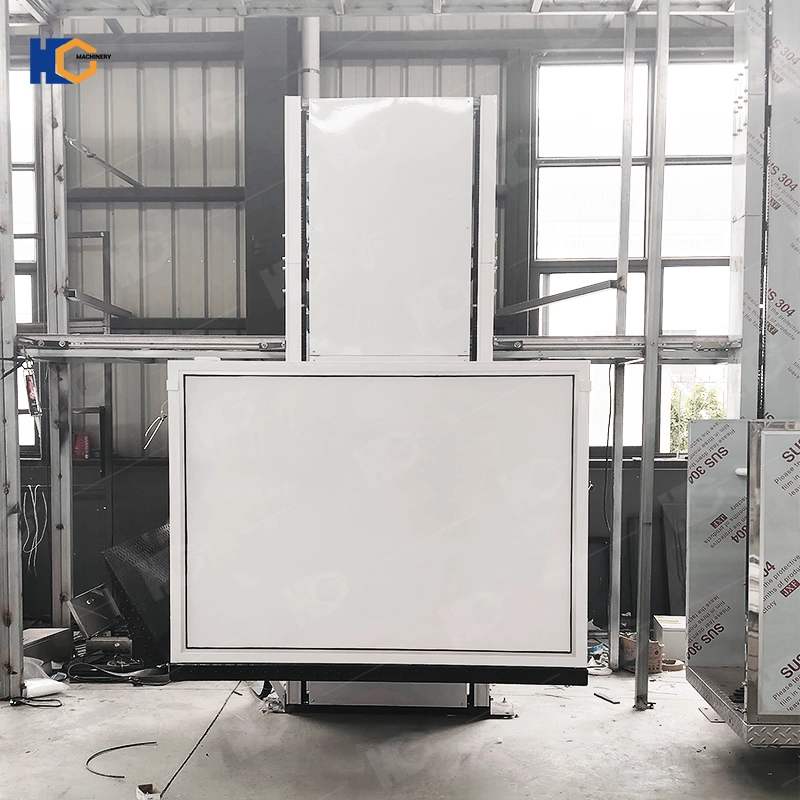
What Are Home Wheelchair Elevators for 2-6 Floors?
A home wheelchair elevator for 2-6 floors is a compact, vertical transportation system designed to carry wheelchairs (and users) between floors in residential settings. Unlike bulky commercial elevators, these are tailored for narrow staircases, tight spaces, and residential power supplies. They typically feature:
Modular design: Adapts to straight, curved, or spiral stairs.
Low profile: Minimal floor space occupation (often <2 sq. ft. at the top/bottom landing).
Safety-first features: Anti-slip platforms, emergency stop buttons, and overload protection.
Key Specifications: Home Wheelchair Elevators for 2-6 Floors
To choose the right model, focus on these critical parameters:
| Parameter | Details |
|---|---|
| Floor Coverage | 2–6 floors (supports 1–5 flights of stairs). |
| Load Capacity | 300–500 lbs (136–227 kg); some heavy-duty models up to 600 lbs. |
| Drive System | - Screw-driven (most stable, low noise) - Chain-driven (quiet, compact) - Hydraulic (powerful, for steep stairs). |
| Platform Size | 30”x48” (standard); custom sizes (e.g., 36”x52”) for larger wheelchairs. |
| Power Supply | 220V single-phase (residential) or 24V DC (battery backup models). |
| Speed | 3–6 ft/min (slow, safe for indoor use). |
| Materials | Stainless steel (corrosion-resistant) or aluminum alloy (lightweight). |
| Safety Features | Anti-fall brake, emergency stop, obstacle detection, and anti-slip surface. |
| Control Options | Remote control, wall panel, or smartphone app (smart models). |
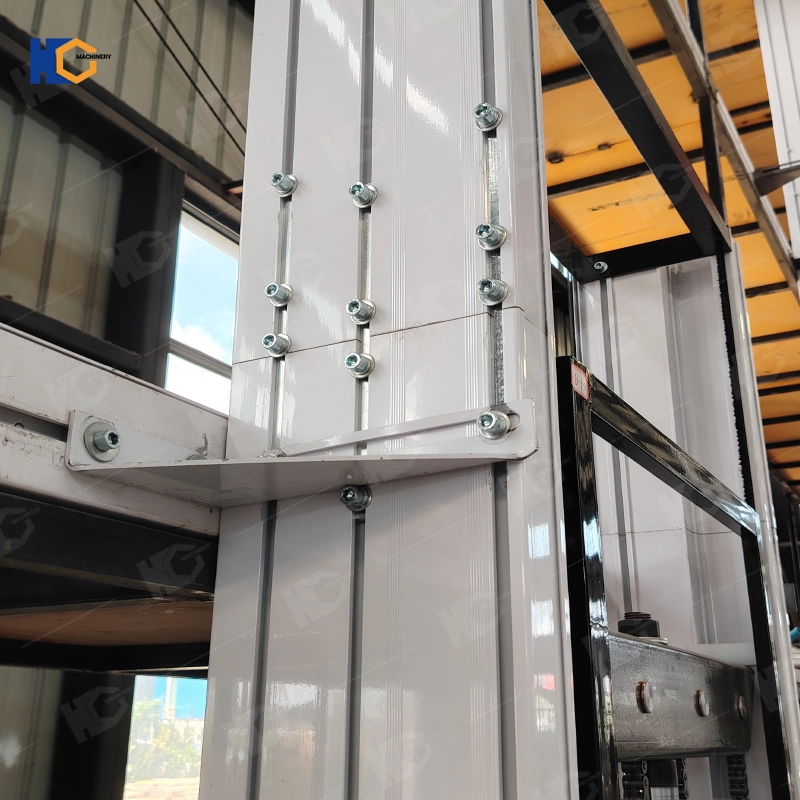
Wholesale Price List: Home Wheelchair Elevators for 2-6 Floors
Prices vary based on floors covered, drive type, materials, and customization. Below are FOB China (Free On Board) rates for bulk orders (≥10 units):
1. Entry-Level Models (2–3 Floors)
| Model | Floors | Drive Type | Platform Size | Load Capacity | Price per Unit |
|---|---|---|---|---|---|
| BasicPlus | 2–3 | Screw-driven | 30”x48” | 300 lbs | 4,500–6,000 |
| LiteScape | 2–3 | Chain-driven | 30”x48” | 350 lbs | 5,000–6,800 |
2. Mid-Range Models (4–5 Floors)
| Model | Floors | Drive Type | Platform Size | Load Capacity | Price per Unit |
|---|---|---|---|---|---|
| SafeStep Pro | 4–5 | Screw-driven | 36”x52” (custom) | 500 lbs | 8,000–10,500 |
| SmartLift | 4–5 | Hydraulic | 30”x48” | 450 lbs | 9,500–12,000 |
3. Premium Models (6 Floors)
| Model | Floors | Drive Type | Platform Size | Load Capacity | Price per Unit |
|---|---|---|---|---|---|
| MaxElevate | 6 | Screw-driven | 36”x52” | 600 lbs | 14,000–17,500 |
| UltraSafe | 6 | Hybrid (screw+hydraulic) | 36”x52” | 550 lbs | 16,000–20,000 |
10 Tips for Choosing the Right Home Wheelchair Elevator (2-6 Floors)
Selecting a wheelchair elevator is a long-term investment in safety and convenience. Here’s how to avoid common pitfalls:
1. Evaluate Your Staircase Structure
Measure stairs: Width (minimum 28” clear space), rise (height of each step), and run (depth of each step).
Note obstacles: Handrails, light fixtures, or tight turns may require custom platforms or railings.
2. Prioritize Load Capacity
Factor in the user’s weight, plus any items they might carry (e.g., oxygen tanks, groceries). Aim for 20–30% extra capacity.
3. Choose the Right Drive System
Screw-driven: Best for stability on steep or uneven stairs; ideal for 4+ floors.
Chain-driven: Quiet and compact—perfect for 2–3 floors with narrow stairs.
Hydraulic: Powerful for heavy loads but requires more maintenance.
4. Check Safety Certifications
Look for CE, UL, or ISO 13485 certifications (medical device standards ensure rigorous testing).
5. Consider Space Constraints
Top/bottom landing: Ensure 4–6 sq. ft. of clear space for safe boarding/alighting.
Railings: Opt for foldable or removable rails if you need unobstructed access.
6. Evaluate Power Requirements
Most models use 220V (standard in homes), but battery backup models (e.g., SmartLift) are ideal for areas with frequent power outages.
7. Test Control Options
Prefer remote controls with large buttons or smartphone apps (for users with limited dexterity).
8. Ask About Maintenance
Inquire about service intervals (e.g., annual inspections) and replacement part availability (avoid proprietary parts that are hard to source).
9. Compare Warranties
Look for at least 2–3 years of coverage on the drive system and 1 year on electrical components.
10. Hire a Licensed Installer
Improper installation can void warranties and compromise safety. Choose suppliers that include professional installation in their quotes.
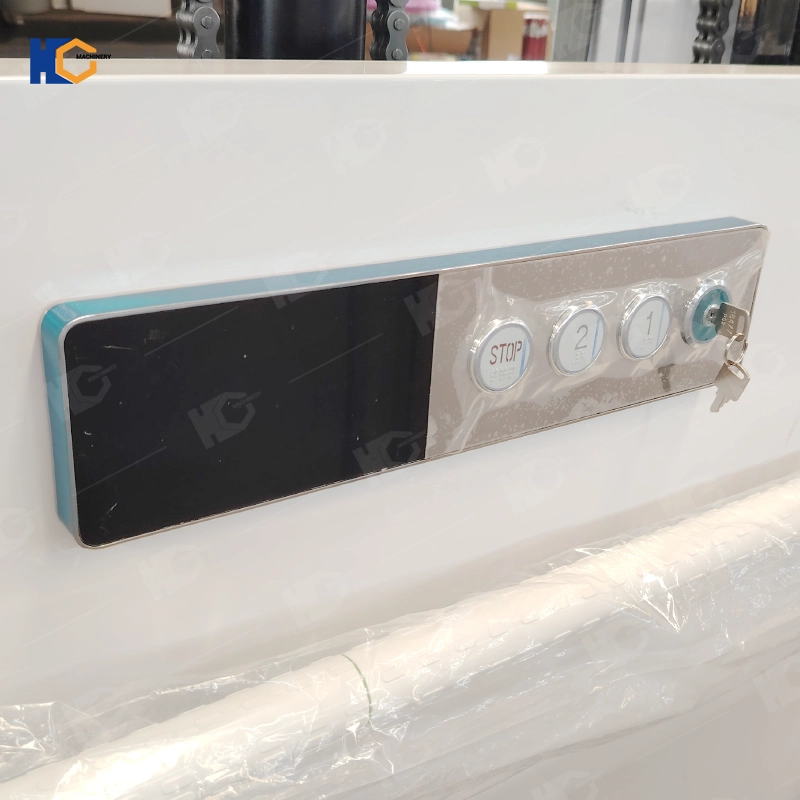
10 Risks to Avoid When Installing a Home Wheelchair Elevator
Even with careful planning, hidden risks can arise. Mitigate them with these precautions:
1. Structural Damage
Risk: Drilling into walls or stairs may weaken load-bearing structures.
Solution: Hire a structural engineer to assess your home’s integrity before installation.
2. Electrical Hazards
Risk: Faulty wiring or overloaded circuits can cause fires.
Solution: Use certified electricians and ensure the elevator’s voltage matches your home’s system.
3. Platform Misalignment
Risk: A misaligned platform can cause the elevator to jerk or get stuck.
Solution: Opt for models with laser-guided alignment systems (common in premium brands).
4. Inadequate Ventilation
Risk: Hydraulic models may overheat in enclosed spaces.
Solution: Install vents near the elevator shaft or choose air-cooled models.
5. Poor User Training
Risk: Users may panic and press multiple buttons, causing malfunctions.
Solution: Provide detailed operation manuals and offer a tutorial session.
6. Lack of Emergency Backup
Risk: Power outages can trap users upstairs.
Solution: Select models with battery backups (adds ~800–1,200 to the cost).
7. Corrosion
Risk: Moisture in bathrooms or basements can rust metal components.
Solution: Choose stainless steel platforms and rails (avoid aluminum in humid areas).
8. Noise Pollution
Risk: Chain-driven models may squeak over time.
Solution: Lubricate chains regularly or invest in silent chain models.
9. Insurance Coverage Gaps
Risk: Homeowners’ insurance may not cover elevator-related accidents.
Solution: Update your policy to include the elevator and its installation.
10. Poor After-Sales Support
Risk: Suppliers may disappear after installation, leaving you with no help for repairs.
Solution: Partner with suppliers that have local service centers or 24/7 customer support.
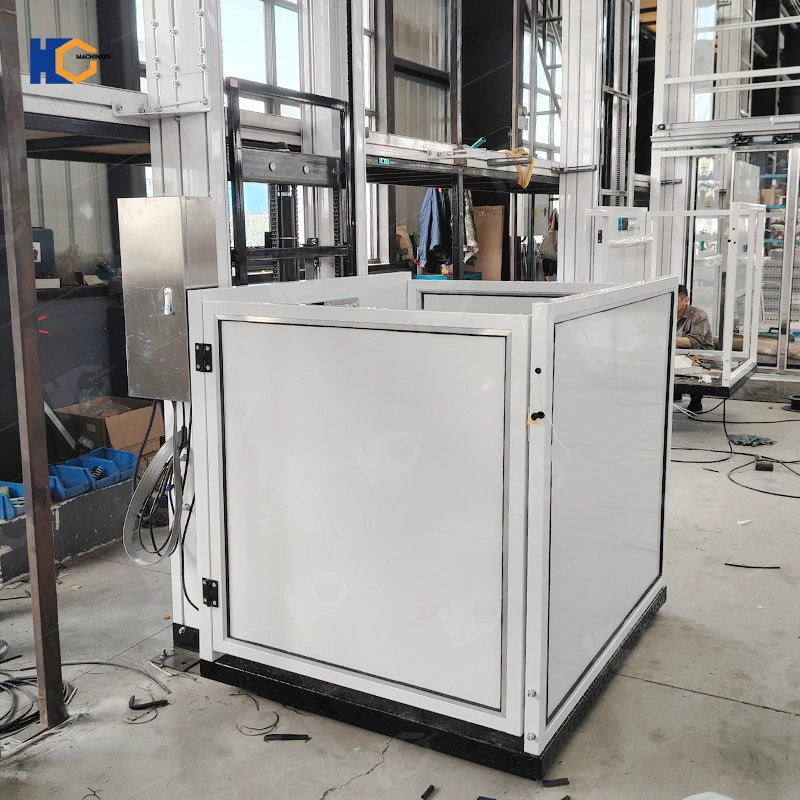
10 Common Questions About Home Wheelchair Elevators (2-6 Floors)
Q1: Can my staircase accommodate a wheelchair elevator?
A: Most staircases work if they have a minimum width of 28” and clear headroom (7’+). Spiral or curved stairs may require custom rails, which increase costs.
Q2: How long does installation take?
A: Typically 3–7 days, depending on complexity (e.g., 2 floors: 3 days; 6 floors: 7 days).
Q3: How much does maintenance cost annually?
A: 300–800/year for inspections, lubrication, and part replacements (screw-driven models are cheaper to maintain than hydraulic ones).
Q4: Can the elevator carry more than one person?
A: Most models support 1–2 people (with a total weight under the load capacity). Check the specs for “occupant + wheelchair” limits.
Q5: Is it noisy?
A: Screw-driven models operate at ~45 dB (quieter than a conversation); chain-driven models are slightly louder (~50 dB).
Q6: Do I need a permit to install it?
A: Yes—check local building codes. Many suppliers assist with permit applications.
Q7: Can it be used outdoors?
A: Only if labeled “outdoor-rated” (stainless steel, weatherproof seals). Most are for indoor use.
Q8: What happens if the power goes out?
A: Non-battery models require manual lowering (via a hand crank). Battery backups auto-engage during outages.
Q9: Can I customize the platform size?
A: Yes—suppliers often offer custom sizes (e.g., 36”x52”) for larger wheelchairs or mobility scooters.
Q10: How long does the warranty last?
A: Most brands offer 2–3 years on the drive system, 1 year on electronics, and 6 months on labor.
Final Thoughts: Elevate Independence with the Right Home Wheelchair Elevator
A home wheelchair elevator for 2-6 floors isn’t just a convenience—it’s a lifeline for those who need to navigate stairs safely. By understanding specifications, avoiding common risks, and following our selection tips, you can choose a model that fits your budget, staircase, and lifestyle.
Whether you’re caring for an aging parent, supporting a loved one with disabilities, or future-proofing your home, the right elevator will restore freedom, reduce stress, and enhance quality of life. Invest wisely, prioritize safety, and let every floor feel within reach.
As a professional barrier-free wheelchair elevator manufacturer in China, we are committed to manufacturing 2-6-story barrier-free wheelchair elevators, with prices as low as $4,500–46,000, and prices for 2, 3, 4, 5, and 6 floors are different. If you have customized and OEM barrier-free wheelchair elevator needs, you can contact us directly to get a competitive price.
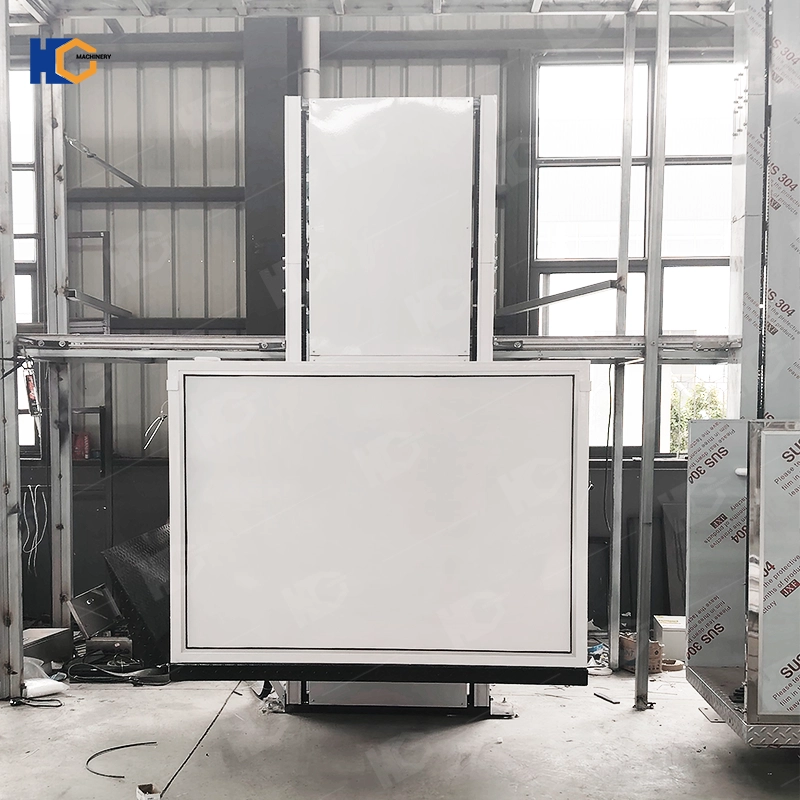
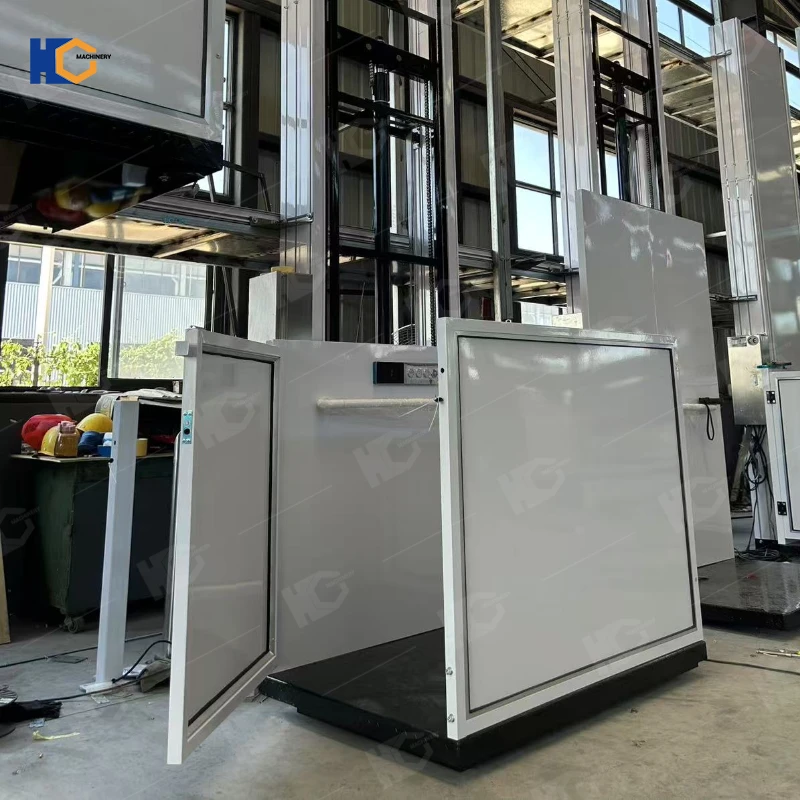
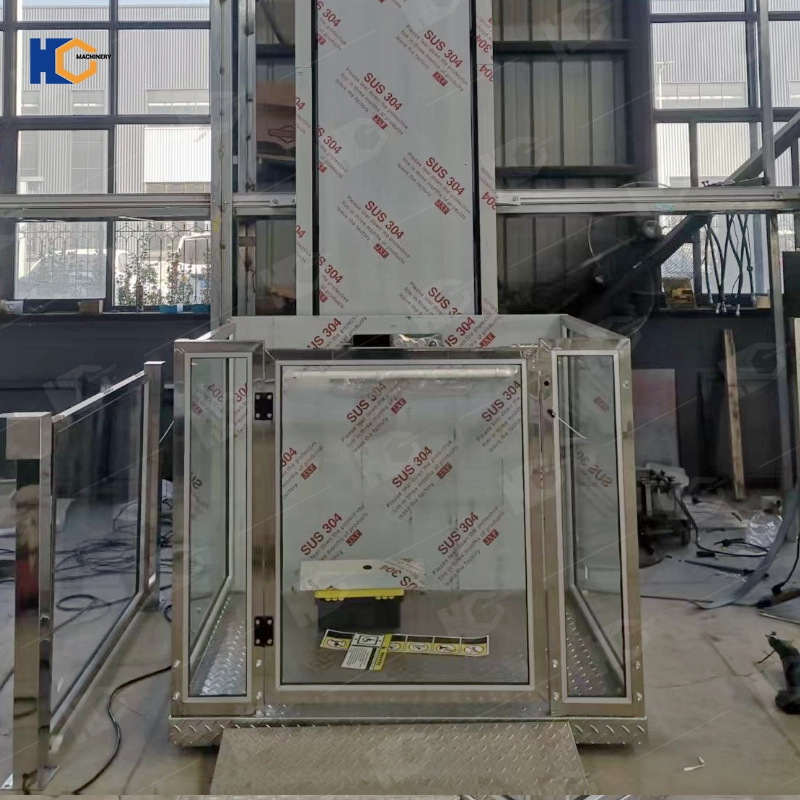
322.webp)
920.webp)
235.webp)